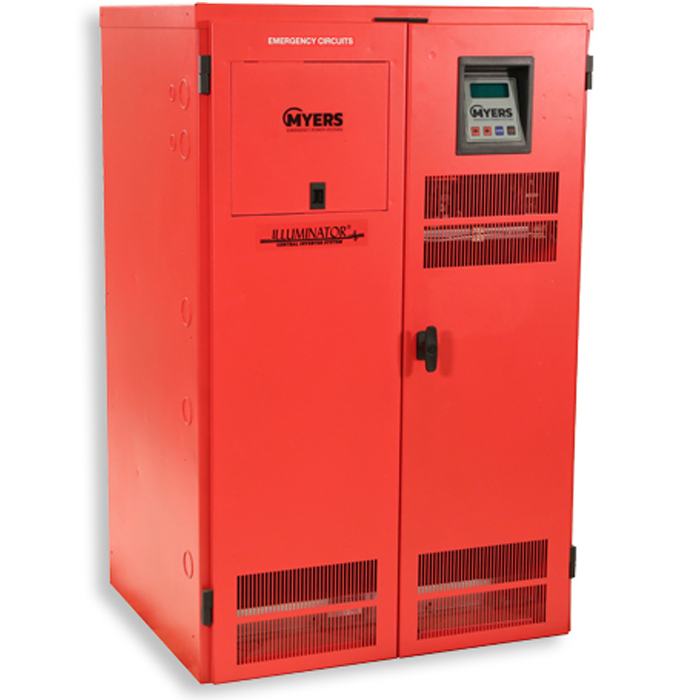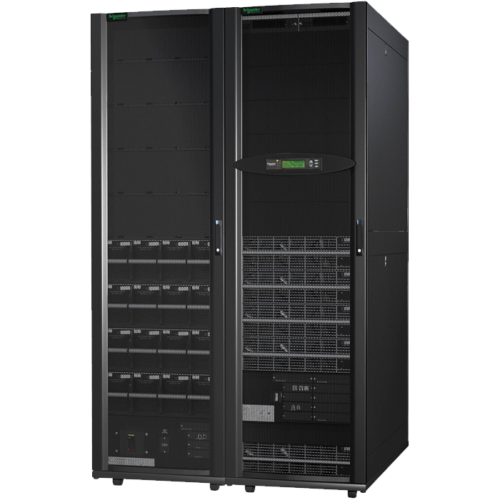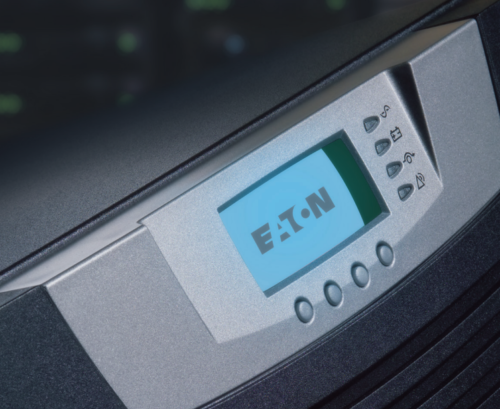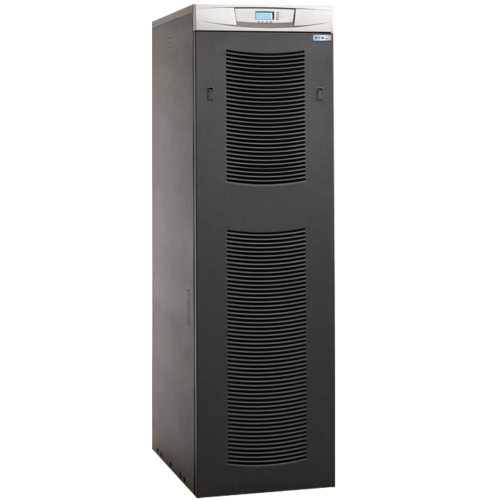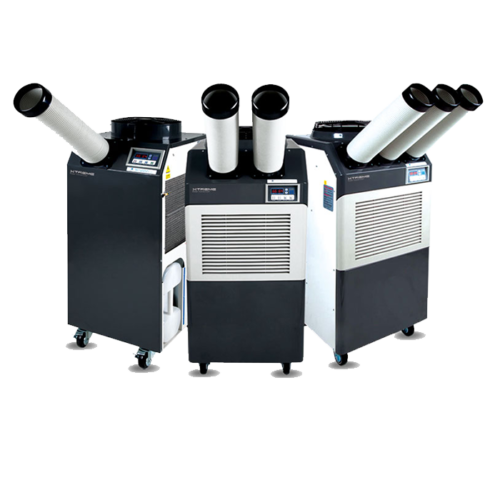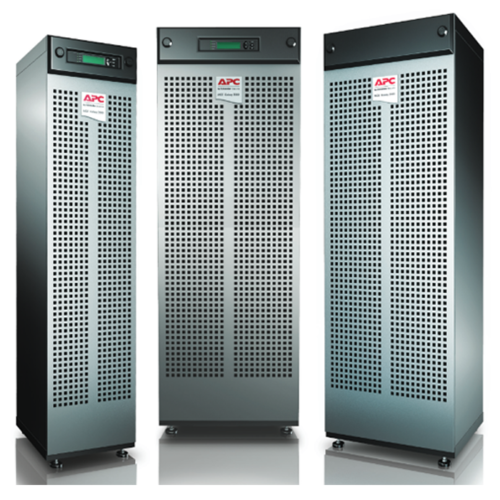The Illuminator E (HID/Motor) is a groundbreaking innovation in automotive lighting, offering enhanced visibility, energy efficiency, longevity, and safety. This comprehensive guide explains its components, operation, installation, and troubleshooting, making it an essential choice for those seeking both improved functionality and modern aesthetics in their vehicle lighting.
ILLUMINATOR E (HID/MOTOR)
Description
ILLUMINATOR E (HID/MOTOR)
In the realm of emergency lighting systems and motor load management, the ILLUMINATOR E by Myers EPS stands out as a beacon of innovation and reliability. Designed for High-Intensity Discharge (HID) and motor loads, this fast transfer central inverter system not only guarantees uninterrupted power supply but also enhances operational efficiency and safety.
This comprehensive guide delves into the features, capacities, and unparalleled advantages of the ILLUMINATOR E, offering insights into why it is the premier choice for facilities aiming to optimize their emergency lighting and motor load solutions.
What is the Illuminator E (HID/Motor)?
The Illuminator E is a groundbreaking innovation in automotive lighting technology, revolutionizing the way vehicles equipped with High-Intensity Discharge (HID) bulbs or motors illuminate the road. To truly appreciate its significance, let's delve into a comprehensive examination of the Illuminator E (HID/Motor), including its key components and operational principles.
Components of the Illuminator E (HID/Motor)
The Illuminator E (HID/Motor) comprises several essential components, each of which plays a pivotal role in its functioning:
- Ballast: Often referred to as the system's “brain,” the ballast is responsible for regulating the voltage and current supplied to the HID bulbs or motors. Its role is crucial in maintaining a stable and consistent power source, which results in optimal lighting performance.
- Igniter: Serving as the ignition source, the igniter generates a high-voltage pulse required to initiate the electrical discharge within the HID bulbs or motors. Without the igniter, the entire system would remain inert.
- Wiring Harness: Comparable to a circulatory system, the wiring harness connects all the components, enabling seamless communication and efficient power distribution. It ensures that the entire system functions in harmony.
How the Illuminator E (HID/Motor) Works
The Illuminator E (HID/Motor) operates based on the principles of HID technology, which involve controlling the flow of electrical discharge through xenon gas to produce an intense and efficient light source. Here's a detailed step-by-step breakdown of its operation:
- Power Supply Initiation: When you activate your vehicle's headlights, an electrical signal is sent to the ballast.
- Voltage Regulation: The ballast's primary role is to regulate the incoming power, ensuring that it stays within the appropriate range for the HID bulbs or motors.
- Ignition Phase: Subsequently, the igniter comes into play. It generates a high-voltage pulse, acting as the ignition source to initiate the electrical discharge within the HID bulbs or motors.
- Xenon Gas Illumination: With the electrical discharge initiated, the xenon gas within the HID bulb or motor comes to life. This process produces an incredibly intense and efficient arc of light, surpassing the brightness and color temperature capabilities of traditional halogen bulbs by far.

Advantages of the Illuminator E (HID/Motor)
The Illuminator E (HID/Motor) offers a plethora of benefits, catering to both vehicle owners and drivers. Let's embark on an extensive exploration of these advantages:
Enhanced Visibility: Lighting Up the Road
Arguably the most significant advantage of the Illuminator E (HID/Motor) lies in its ability to substantially enhance visibility. During nighttime driving, the brilliance and color clarity of Illuminator E-illuminated roadways significantly reduce the risk of accidents.
The intense and focused beam of light ensures that obstacles, road signs, and pedestrians are visible from a distance, allowing drivers ample time to react.
Energy Efficiency: Illuminating Without the Excess
In an era when environmental consciousness is paramount, the Illuminator E (HID/Motor) proudly stands as an energy-efficient solution. Compared to conventional halogen bulbs, the Illuminator E consumes substantially less power to generate significantly brighter illumination.
This not only relieves strain on your vehicle's electrical system but also contributes to fuel savings, reducing the overall environmental footprint of your vehicle.
Durability: Lighting the Long Road Ahead
When it comes to longevity, the Illuminator E outperforms traditional bulbs with remarkable ease. Properly maintained and cared for, these HID systems can continue to shine bright for up to an impressive 10,000 hours. The extended lifespan translates into long-term cost savings, making the Illuminator E (HID/Motor)E a sound investment.
Aesthetics: Radiating Style
Beyond its functional advantages, the Illuminator E adds a touch of style and modernity to your vehicle's appearance. The crisp, white light emitted by HID bulbs not only enhances visibility but also elevates the overall aesthetic appeal of your vehicle, making it a favorite among car enthusiasts looking to make a statement on the road.
Safety: Illuminating the Path to Safety
Enhanced visibility doesn't just benefit the driver; it ensures the safety of all road users. The intense and focused light generated by the Illuminator E (HID/Motor) helps drivers detect obstacles, potential hazards, and pedestrians with greater ease, drastically reducing the likelihood of accidents and promoting safer roadways for everyone.
Installing the Illuminator E (HID/Motor)E
Understanding the benefits of the Illuminator E (HID/Motor)E is just the beginning. To fully harness its capabilities, one must master the art of installation. While professional installation is recommended for optimal results, let's explore the intricate process involved:
Safety First: A Prerequisite
Before embarking on the installation journey, safety should always be the foremost consideration. Begin by ensuring that your vehicle's engine is turned off, and the headlights are switched off. To prevent electrical shock, disconnect the vehicle's battery.
Accessing the Headlights: Navigating the Vehicle's Anatomy
The precise steps for accessing the headlights may vary based on your vehicle's make and model. Consulting your vehicle's manual or seeking guidance from online resources will provide you with tailored instructions.
Replacing Bulbs: Swapping Halogen for HID Brilliance
If your Illuminator E (HID/Motor) kit includes HID bulbs, the next step involves carefully removing the existing halogen bulbs and replacing them with the HID counterparts. Ensure that the bulbs are securely and properly seated to prevent any potential issues.
Wiring: Connecting the Lifelines
The heart of the Illuminator E system is the intricate wiring harness that connects all the components together. To avoid complications and ensure a seamless installation, follow the manufacturer's instructions meticulously. Each connection plays a critical role in the overall functionality of the system.
Testing: Ensuring a Glowing Success
Before reassembling the headlight assembly, it's imperative to test the Illuminator E (HID/Motor) to ensure it operates correctly. Pay close attention to any flickering or unusual behavior, as these can indicate underlying issues that require immediate attention.
Reassembly: Completing the Transformation
If the system passes the testing phase with flying colors and operates as expected, proceed with reassembling the headlight assembly. Secure it firmly in place, reconnect the vehicle's battery, and you're now ready to bask in the brilliance of your newly upgraded lighting system.
Common Issues and Troubleshooting
Like any complex automotive component, the Illuminator E (HID/Motor) may encounter issues from time to time. To empower you with the knowledge to address these challenges, let's delve into common problems and their corresponding troubleshooting methods:
Flickering Lights: Taming the Erratic Glow
Flickering lights can often be attributed to loose connections or a malfunctioning ballast. To resolve this issue, inspect all connections, ensuring they are snug and secure. If flickering persists, consider replacing the ballast with a new, reliable unit.
Color Temperature Mismatch: Harmonizing the Hues
If your HID bulbs emit different colors, it's indicative of a bulb-related issue. In such cases, the best course of action is to replace the mismatched bulb with one that matches the color temperature of the working unit. This will restore uniformity in lighting.
Intermittent Operation: Addressing the On-and-Off Dilemma
Intermittent operation can often be traced back to a malfunctioning igniter or wiring harness. Thoroughly inspect these components for any signs of damage or wear. If any issues are detected, replace the faulty parts to ensure consistent and reliable illumination.
Condensation: Battling Moisture Intrusion
Condensation within the headlight assembly is a common issue that can compromise the effectiveness of the Illuminator E (HID/Motor). To combat this problem, ensure that the headlight assembly is meticulously sealed and free from any cracks or openings that may allow moisture to enter.
Frequently Asked Questions (FAQs) about Illuminator E (HID/Motor)
Q1: What are the latest advancements in Illuminator E technology?
A1: Illuminator E technology continues to evolve, and manufacturers are constantly pushing the boundaries of innovation. Some of the latest advancements include:
- Smart Illuminator E Systems: These systems can adapt to various driving conditions, automatically adjusting the light intensity and pattern to optimize visibility without causing glare for other drivers.
- Bi-Color Temperature Options: Some Illuminator E (HID/Motor) kits now offer adjustable color temperatures, allowing drivers to switch between warm and cool white light, depending on their preference or driving conditions.
- Improved Efficiency: Manufacturers are developing more energy-efficient ballasts and igniters, reducing power consumption while maintaining high brightness levels.
Q2: Can I install the Illuminator E on any vehicle?
A2: While Illuminator E (HID/Motor) kits are compatible with a wide range of vehicles, it's essential to check the specific requirements for your make and model. Some modern vehicles come equipped with intricate lighting systems that may require additional compatibility considerations or adapters. Always consult your vehicle's manual and, if in doubt, seek professional guidance to ensure a seamless installation.
Q3: Are there any legal concerns or regulations regarding the use of Illuminator E?
A3: Regulations regarding aftermarket lighting components, including the Illuminator E, can vary by region and country. To stay compliant with local laws and regulations, it's crucial to:
- Check Local Regulations: Research the lighting regulations in your area to ensure that the intensity, color, and beam pattern of your Illuminator E system meet the legal requirements.
- Proper Alignment: Ensure that your headlights are correctly aligned to prevent blinding oncoming traffic, which can lead to legal issues and safety concerns.
Q4: Can I retrofit my existing halogen headlights with the Illuminator E HID kit?
A4: Yes, it's possible to retrofit your vehicle's existing halogen headlights with an Illuminator E HID kit. However, it's crucial to follow the manufacturer's instructions meticulously and ensure that the kit you choose is compatible with your vehicle. Additionally, consider having a professional technician perform the retrofit to guarantee a safe and effective installation.
Q5: What maintenance is required for the Illuminator E?
A5: The Illuminator E (HID/Motor) is relatively low-maintenance, but there are a few key considerations:
- Bulb Replacement: HID bulbs have a longer lifespan than halogen bulbs, but they will eventually wear out. Replace them as needed to maintain optimal performance.
- Cleaning: Regularly clean the headlight lenses to ensure maximum light output. Dirt and debris can reduce the effectiveness of your Illuminator E (HID/Motor) system.
- Wiring Inspection: Periodically inspect the wiring and connections for signs of wear or damage. Replace any damaged components promptly to prevent issues.
- Alignment Check: Check the alignment of your headlights regularly to avoid glare and ensure proper illumination.
Q6: Are there any eco-friendly options for Illuminator E?
A6: Yes, some manufacturers offer eco-friendly options, such as energy-efficient ballasts and bulbs. These components are designed to reduce power consumption and minimize the environmental impact of your Illuminator E system. When shopping for Illuminator E (HID/Motor) kits, look for eco-conscious options if sustainability is a priority for you.
Q7: Can I use Illuminator E bulbs with my vehicle's daytime running lights (DRLs)?
A7: Using Illuminator E (HID/Motor) bulbs with DRLs can be challenging due to differences in voltage and power requirements. It's essential to consult the manufacturer's guidelines and, if necessary, use compatible DRL-specific Illuminator E kits to ensure proper function and prevent potential issues with your vehicle's electrical system.
Conclusion
The Illuminator E (HID/Motor) represents a transformative leap in automotive lighting technology, reshaping the way we perceive nighttime driving and vehicle aesthetics. Its unparalleled brightness, energy efficiency, durability, and safety enhancements have endeared it to vehicle owners and drivers worldwide.
By delving into the intricate details of its inner workings, installation, and troubleshooting, you now possess a comprehensive understanding of the Illuminator E (HID/Motor). Armed with this knowledge, you can embark on a journey to illuminate the roads safely, stylishly, and efficiently.
